SCORHE: a novel and practical approach to video monitoring of laboratory mice housed in vivarium cage racks
- PMID: 24706080
- PMCID: PMC4570574
- DOI: 10.3758/s13428-014-0451-5
SCORHE: a novel and practical approach to video monitoring of laboratory mice housed in vivarium cage racks
Abstract
The System for Continuous Observation of Rodents in Home-cage Environment (SCORHE) was developed to demonstrate the viability of compact and scalable designs for quantifying activity levels and behavior patterns for mice housed within a commercial ventilated cage rack. The SCORHE in-rack design provides day- and night-time monitoring with the consistency and convenience of the home-cage environment. The dual-video camera custom hardware design makes efficient use of space, does not require home-cage modification, and is animal-facility user-friendly. Given the system's low cost and suitability for use in existing vivariums without modification to the animal husbandry procedures or housing setup, SCORHE opens up the potential for the wider use of automated video monitoring in animal facilities. SCORHE's potential uses include day-to-day health monitoring, as well as advanced behavioral screening and ethology experiments, ranging from the assessment of the short- and long-term effects of experimental cancer treatments to the evaluation of mouse models. When used for phenotyping and animal model studies, SCORHE aims to eliminate the concerns often associated with many mouse-monitoring methods, such as circadian rhythm disruption, acclimation periods, lack of night-time measurements, and short monitoring periods. Custom software integrates two video streams to extract several mouse activity and behavior measures. Studies comparing the activity levels of ABCB5 knockout and HMGN1 overexpresser mice with their respective C57BL parental strains demonstrate SCORHE's efficacy in characterizing the activity profiles for singly- and doubly-housed mice. Another study was conducted to demonstrate the ability of SCORHE to detect a change in activity resulting from administering a sedative.
Figures

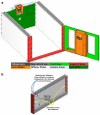


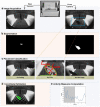

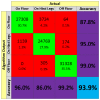

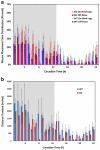


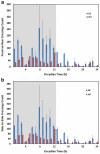
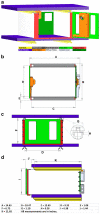
Similar articles
-
MouseVUER: video based open-source system for laboratory mouse home-cage monitoring.Sci Rep. 2024 Feb 1;14(1):2662. doi: 10.1038/s41598-024-52788-9. Sci Rep. 2024. PMID: 38302573 Free PMC article.
-
Three-Dimensional Pose Estimation for Laboratory Mouse From Monocular Images.IEEE Trans Image Process. 2019 Sep;28(9):4273-4287. doi: 10.1109/TIP.2019.2908796. Epub 2019 Apr 1. IEEE Trans Image Process. 2019. PMID: 30946667 Free PMC article.
-
Towards large scale automated cage monitoring - Diurnal rhythm and impact of interventions on in-cage activity of C57BL/6J mice recorded 24/7 with a non-disrupting capacitive-based technique.PLoS One. 2019 Feb 4;14(2):e0211063. doi: 10.1371/journal.pone.0211063. eCollection 2019. PLoS One. 2019. PMID: 30716111 Free PMC article.
-
Challenges of a small world analysis for the continuous monitoring of behavior in mice.Neurosci Biobehav Rev. 2022 May;136:104621. doi: 10.1016/j.neubiorev.2022.104621. Epub 2022 Mar 17. Neurosci Biobehav Rev. 2022. PMID: 35307475 Review.
-
Measuring Locomotor Activity and Behavioral Aspects of Rodents Living in the Home-Cage.Front Behav Neurosci. 2022 Apr 7;16:877323. doi: 10.3389/fnbeh.2022.877323. eCollection 2022. Front Behav Neurosci. 2022. PMID: 35464142 Free PMC article. Review.
Cited by
-
A circadian behavioral analysis suite for real-time classification of daily rhythms in complex behaviors.Cell Rep Methods. 2025 May 19;5(5):101050. doi: 10.1016/j.crmeth.2025.101050. Cell Rep Methods. 2025. PMID: 40393389 Free PMC article.
-
A circadian behavioral analysis suite for real-time classification of daily rhythms in complex behaviors.bioRxiv [Preprint]. 2024 Aug 7:2024.02.23.581778. doi: 10.1101/2024.02.23.581778. bioRxiv. 2024. Update in: Cell Rep Methods. 2025 May 19;5(5):101050. doi: 10.1016/j.crmeth.2025.101050. PMID: 39149294 Free PMC article. Updated. Preprint.
-
PiE: an open-source pipeline for home cage behavioral analysis.Front Neurosci. 2023 Jul 31;17:1222644. doi: 10.3389/fnins.2023.1222644. eCollection 2023. Front Neurosci. 2023. PMID: 37583418 Free PMC article.
-
MouseVUER: video based open-source system for laboratory mouse home-cage monitoring.Sci Rep. 2024 Feb 1;14(1):2662. doi: 10.1038/s41598-024-52788-9. Sci Rep. 2024. PMID: 38302573 Free PMC article.
-
The Treadmill Fatigue Test: A Simple, High-throughput Assay of Fatigue-like Behavior for the Mouse.J Vis Exp. 2016 May 31;(111):54052. doi: 10.3791/54052. J Vis Exp. 2016. PMID: 27286034 Free PMC article.
References
-
- Baker M. Animal models: Inside the minds of mice and men. Nature. 2011;475:123–128. doi:10.1038/475123a. - PubMed
-
- Branson K. Tracking multiple mice through severe occlusions. University of California; San Diego, La Jolla, CA: 2007. Unpublished Ph.D. dissertation.
-
- Branson K, Belongie S. Paper presented at the Computer Vision and Pattern Recognition Conference (CVPR 2005) San Diego, CA: Jun, 2005. Tracking multiple mouse contours (without too many samples)
-
- Chu ER, Kim EK, Gonzalez JM, Ko MH, Liew EC, Tan JCH. Intraocular pressure measurement in acepromazine-sedated mice. Clinical & Experimental Ophthalmology. 2014 doi:10.1111/ceo.12157. - PubMed
MeSH terms
Substances
Grants and funding
LinkOut - more resources
Full Text Sources
Other Literature Sources
Miscellaneous

